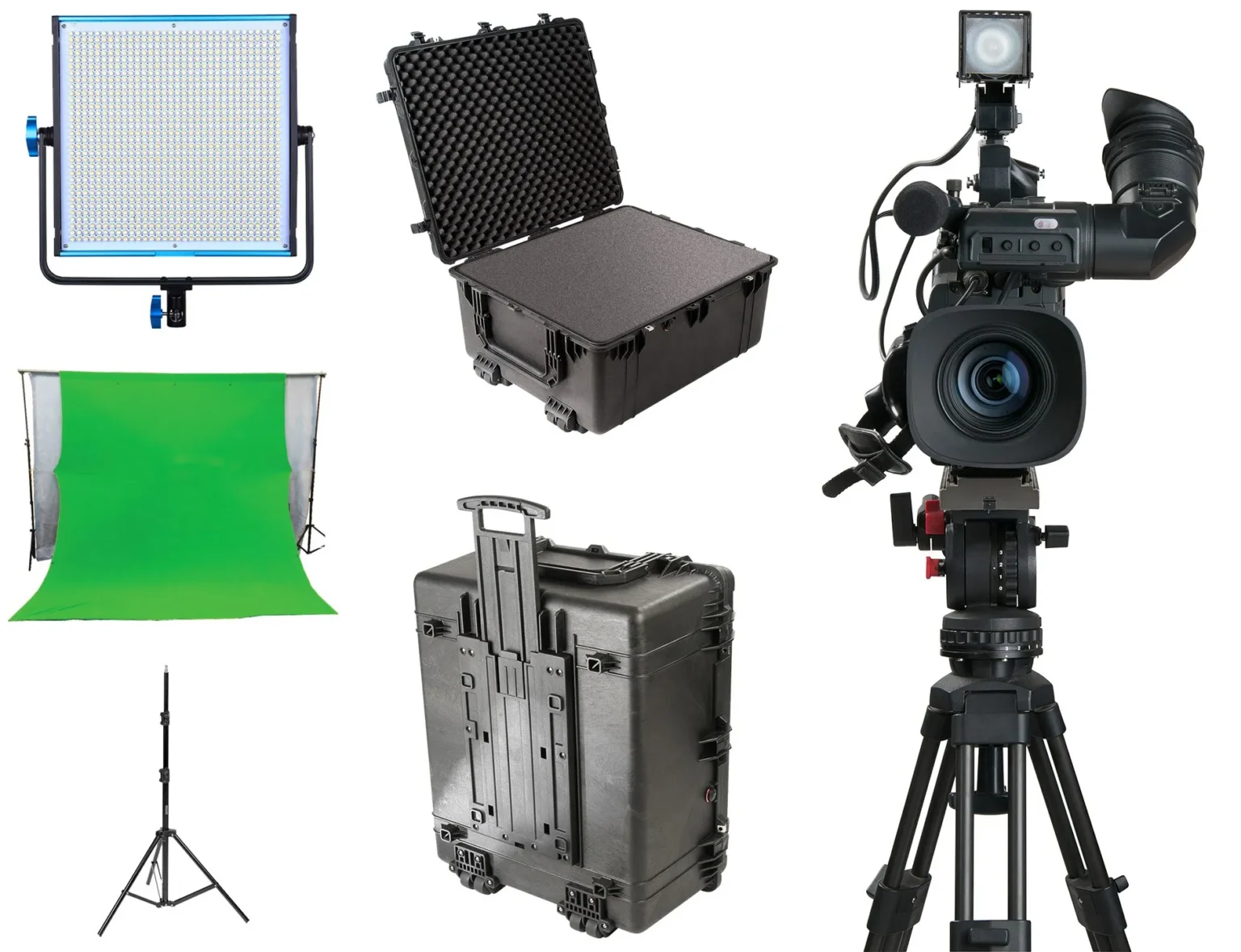When stepping into the world of video projects, it’s understandable that you might initially shy away from owning a green screen kit due to pricing or setup concerns. I held similar beliefs, but soon economically it made more sense to invest in a personal kit versus renting studio time and borrowing kits in various cities. So I ventured to assemble a professional, cost-effective, and “portable” green screen kit.
The Foundation: Lighting
The heart of a successful green screen production lies in optimal lighting. A minimum setup includes five lights: two dedicated to illuminating the green screen, and the others for key lighting, fill, and backlighting. This arrangement strikes a balance between cost and efficacy.
My recommendation is the Dracast Pro Series LED1000 Bi-Color LED Light Panel (V-Mount). These lights are well-suited because of their tunable intensity, slim profile, minimal weight, and compatibility with both power supply and V-mount battery. I find the bi-color model beneficial as it offers variable color temperatures.
The Support: Light Stands and Case
The Dracast DLS-805 light stands are some of the most compact light stands on the market. Despite their small weight, they can be extended up to 6 feet. All five lights, power adapters, white balance cards, and stands can be accommodated in the Pelican 1690 Protector Transport Case.
The Magic Color: Green Screen
The choice of green screen depends on the type of shoot. For full-body shooting with ample floor coverage, the Photek GS12 is great. But, for lesser width requirements sans floor screen, a small collapsible one would suffice.
Budget Breakdown
Here’s an approximate cost calculation of the kit:
- Pelican 1690 case: $540.95
- Photek GS12 green screen: $97
- Impact support system for screen: $109.95
- Dracast DLS-805 stands (5): $120
- Dracast LED1000B lights (5): $2495
With an investment of under $3000, you can own a durable and versatile green screen kit that efficiently pays for itself.
The Final Output
Seeing, indeed, is believing. The images below, from a playful take on a Drake music video, showcase the kit setup, the import into After Effects using Keylight, the Photoshop-generated background, and the final changing color output.
